drawings look too 3d from background domain_10
20 top sketching tips to help elevate your skills
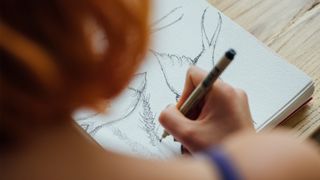
Working a handful of useful sketching tips and tricks into your artistic workflow will have rewarding results for you and your sketchbook. Nosotros know the pain of staring downwardly at a blank page and not knowing where to commencement, with even the roughest of sketches feeling completely out of accomplish. And so we have gathered lots of helpful sketching tips from a wealth of expert artists to help you become those offset marks on the page.
We have a number of tips for both beginners and more advanced artists. Our range of pointers will help you lot with everything from your pencils to shading, silhouettes to smudging and more. While covering the technical side of sketching, nosotros've some tips on how to become inspired, because we know that finding inspiration tin can sometimes be the hardest part. Either way, we should take a few tips to help everyone on their sketching journeys.
If you lot're new to the wonderful earth of sketching or are just looking to update your current sketching kit, and then have a await at our guide to the best pencils and best sketchbooks and treat yourself to some new gear.
Click the icons in the peak right of the pictures to overstate them.
Sketching Tips
01. Know your pencils
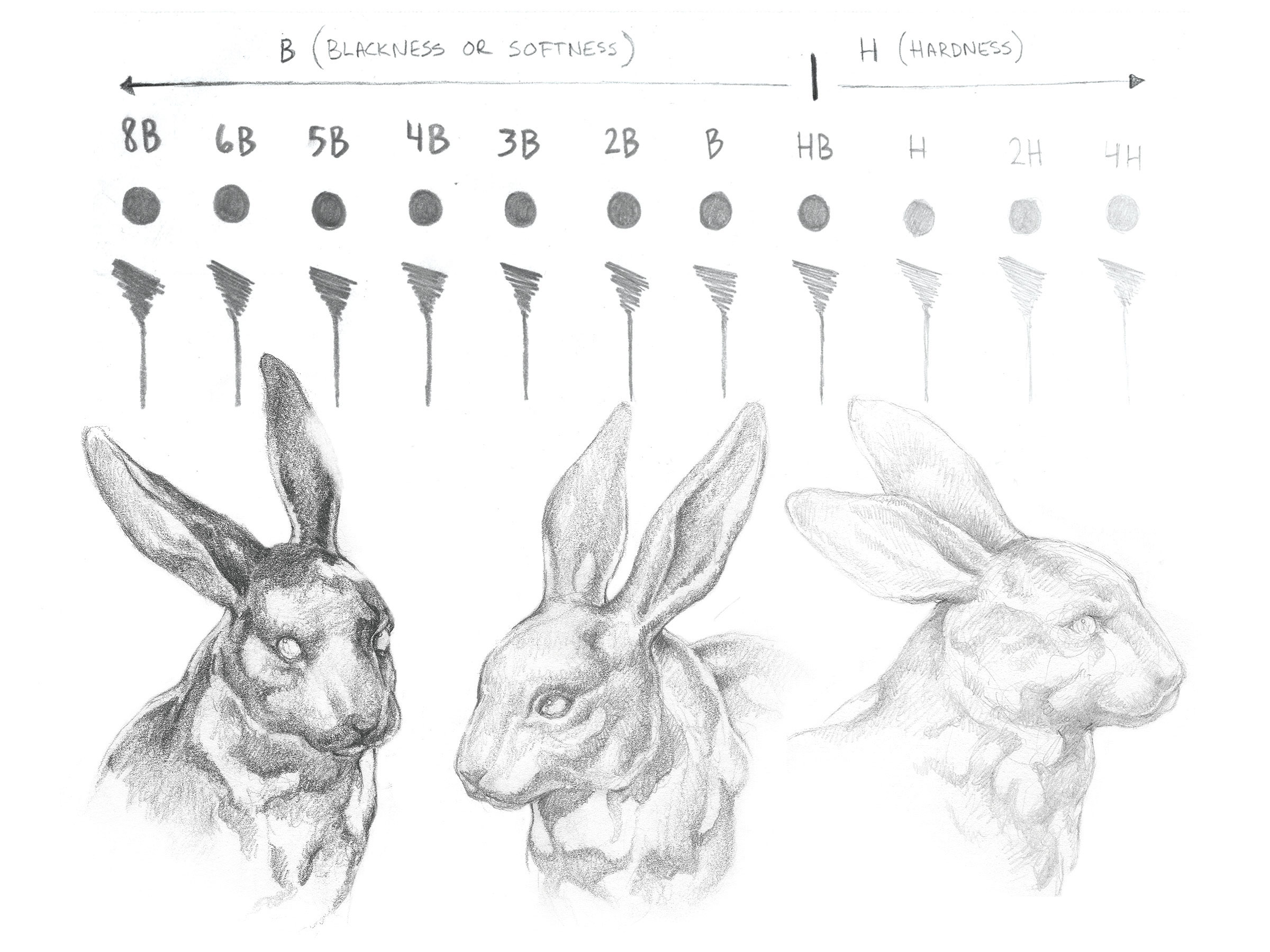
Having the right pencil to begin cartoon your pencil sketch is 1 of the most essential sketching tips. The hardness of the graphite is indicated on the side of the pencil: 'B' pencils are softer, 'H' are harder, and 'HB' sits in the center – in that location's a big difference between a 4H and a 4B. "I recommend starting somewhere on the H calibration as a foundation then finishing with the darker B scale," says travelling convention creative person Tim Von Rueden.
When you lot're learning how to draw, it'south also worth because using mechanical pencils alongside traditional ones. "Mechanical pencils are ordinarily improve suited for precision, while traditional pencils are great for laying downwardly big areas of texture," says Von Rueden. "Go along in mind that nearly mechanical pencils come up with HB pre-inserted, which gives yous merely the middle range to work with."
See the best mechanical pencils hither.
02. Accept command of your pencil
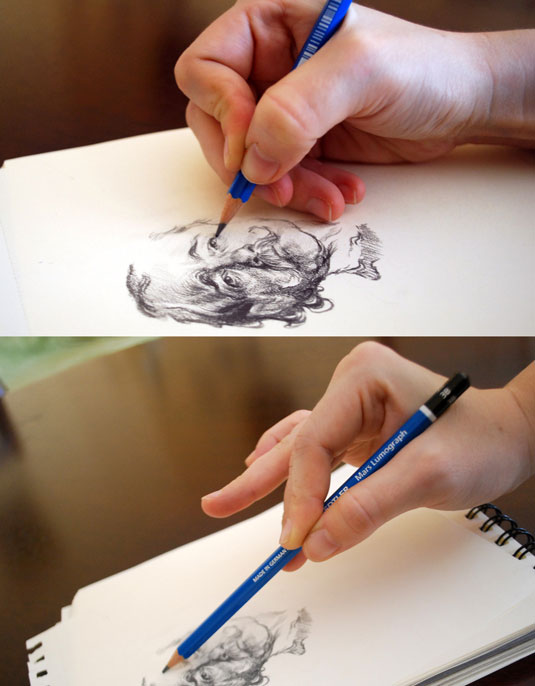
"If you position your mitt closer to the finish of the pencil, you have more than control and precision, but heavier strokes (darker markings)," says illustrator Sylwia Bomba. "Gripping farther upward the pencil will give yous less command and precision, only lighter strokes (lighter markings)."
For more than advice, read our commodity on how to hold a pencil correctly.
03. Attempt dissimilar marking-making methods
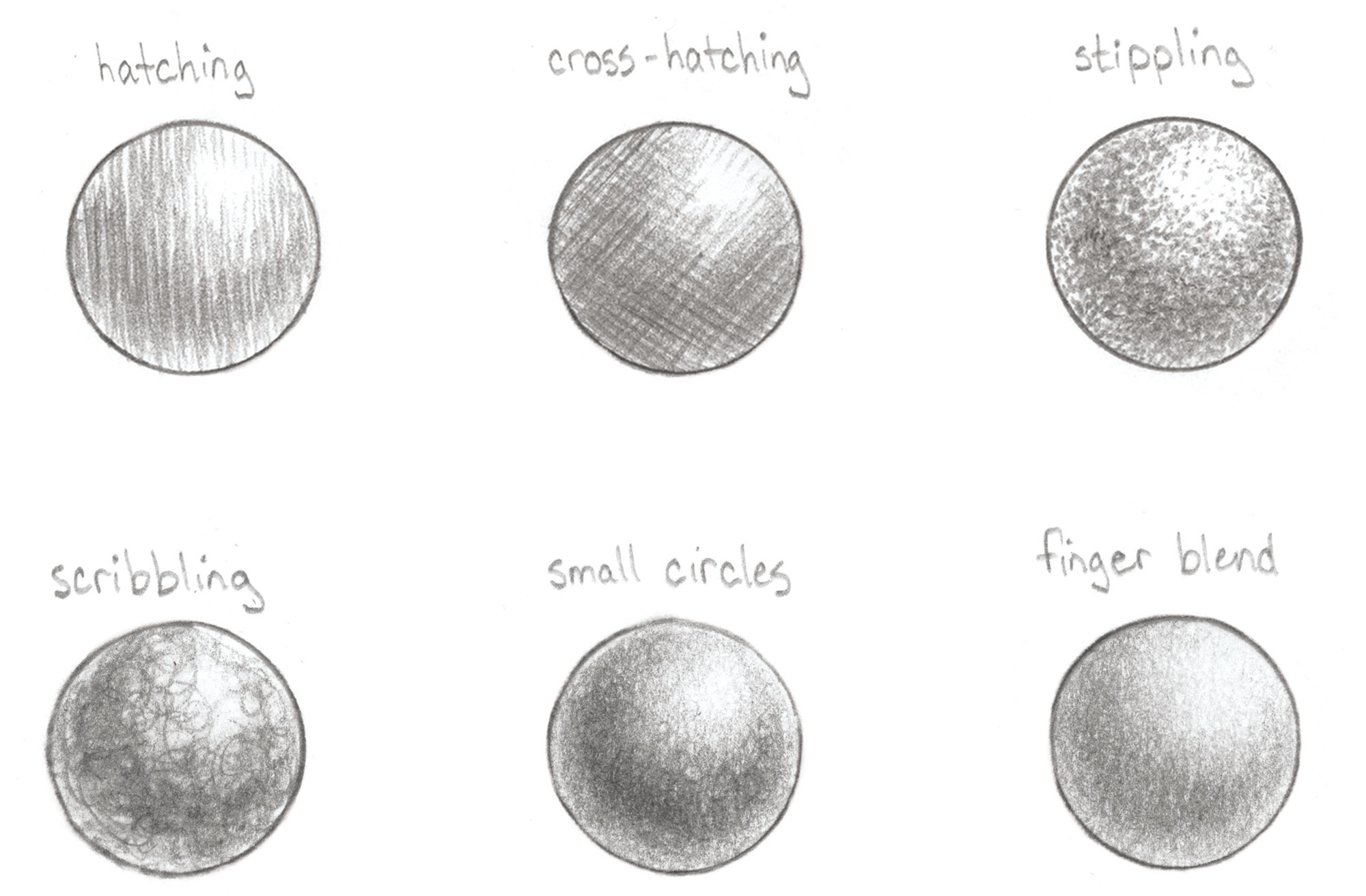
There are enough of sketching tips and techniques to help y'all reach dissimilar styles and effects. Above are some examples demonstrating different ways to create form and depth. "It's of import to experiment and find what works best for you, to not only complement just enhance your fashion," explains Von Rueden. "While I prefer smoother value transitions with the pencil strokes blending in against a thin outline, you may be more partial to cross-hatching against a bold outline."
04. Vary your lines

Use varied lines, says illustrator Rovina Cai. "Non all lines are equal. Subtle shifts in the width and darkness of your lines will create a dynamic, visually interesting drawing. Decision-making the kind of marking you put down tin be tricky in the beginning, but with do you will exist able to create a diversity of marks that work together to make a cohesive image. Experiment with different pencil grades (from 3H to 6B) and with belongings the pencil at unlike angles."
05. Avoid smudging
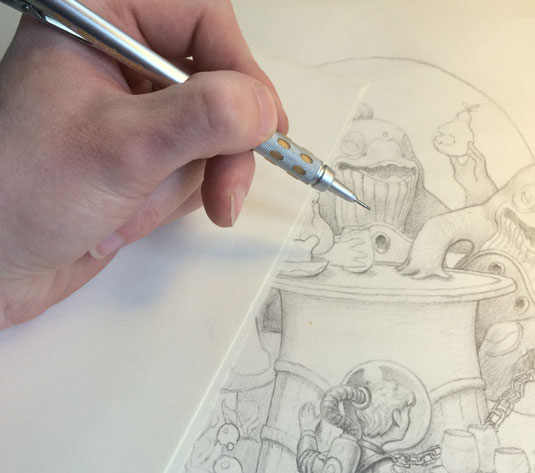
"When shading, use an extra piece of paper underneath your hand," advises artist Brun Croes. "This will minimise the amount your manus smudges your pencil lines. If you lot're right-handed, offset shading from left to correct; if you're left-handed, start at the right and movement to the left.
"In that location's nothing more than frustrating than trying to brand a make clean-looking cartoon that loses its luminescence and value thank you to smudging. Instead, employ smudging to your reward every now and then to smooth out shading. You tin do this with several tools. I employ a simple piece of tissue paper to go the job washed."
06. Control your edges
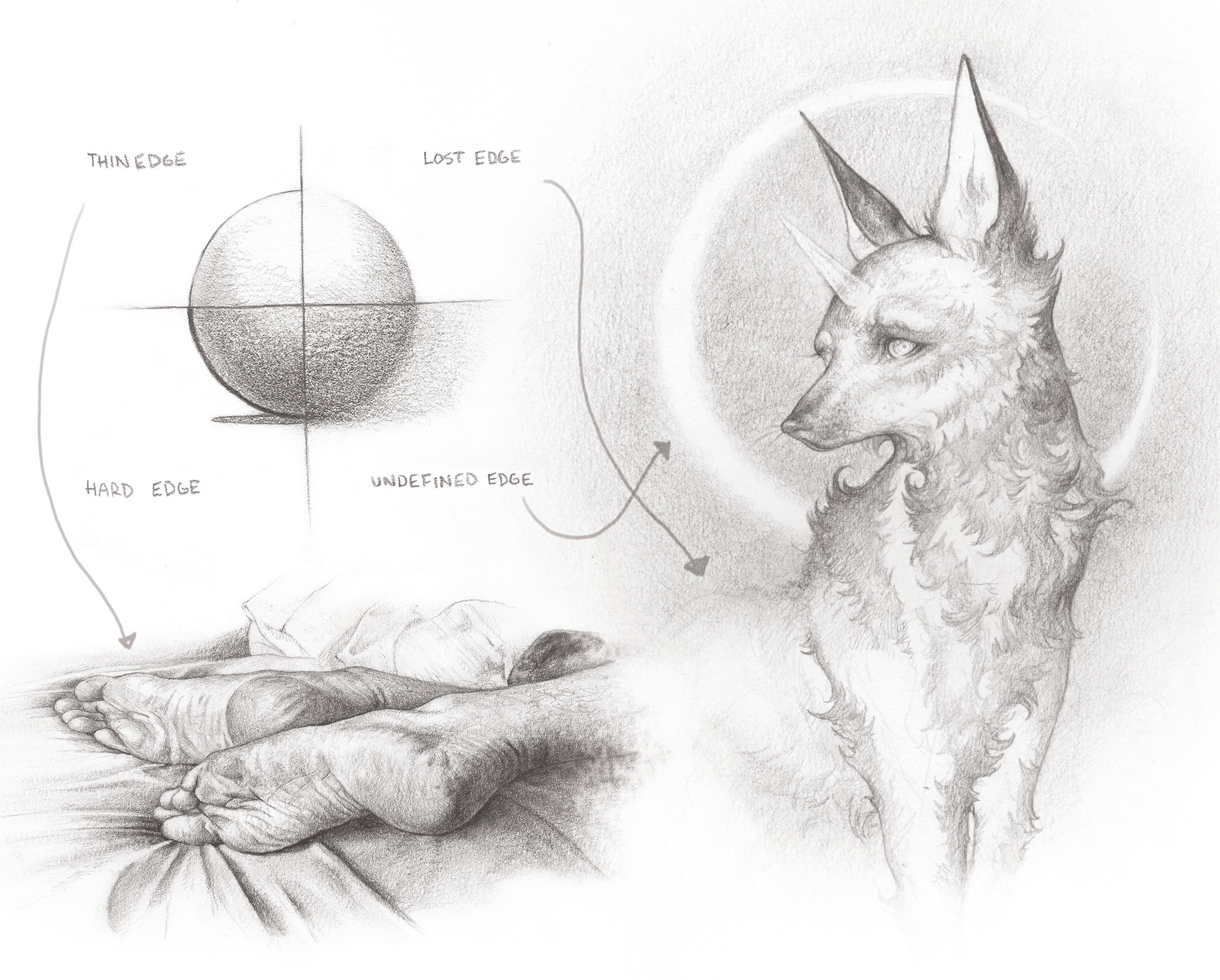
Von Rueden uses four unlike sketching techniques to define object edges: thin, hard, lost and undefined. A thin and hard edges give objects solid borders. Lost edges occur when the object and background values commencement to blend together, so the edge is implied rather than defined. Undefined edges need to be deciphered past the viewer themselves. He suggests exploring all four types, and combining them to create interest within your work.
07. Use a blending stick for smooth shading
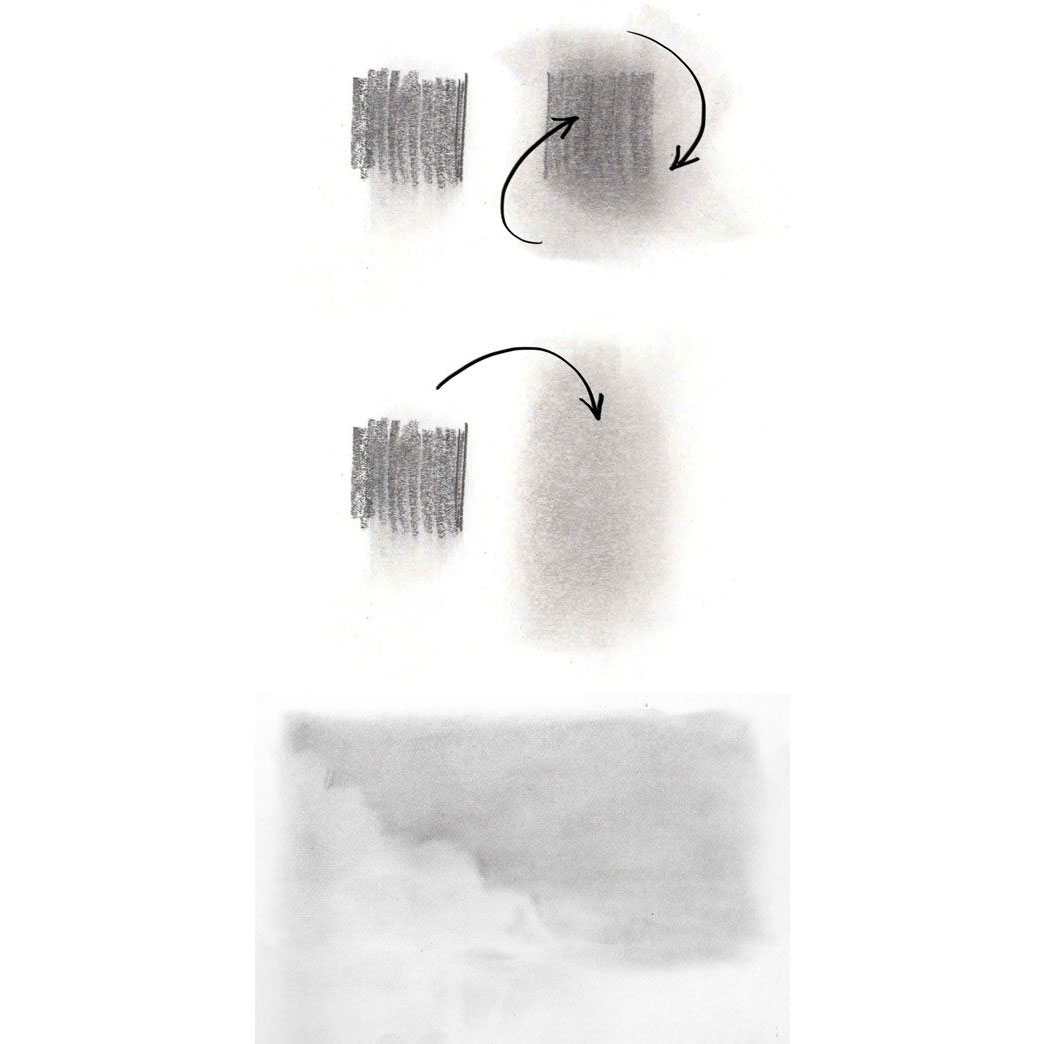
It is possible to create smooth, blended furnishings using pencils – for example, to capture a sky. "Sometimes it'south preferable for your shading to exist less sketchy and more smooth and subtle," says artist Marisa Lewis. "Pencil lines don't alloy perfectly unless you're very conscientious."
To avoid your initial scribbles showing through, Lewis uses a particular technique – meet more art techniques here. "Use spare paper to putter a large swatch of soft graphite or charcoal pencil, and then apply a large blending stick to pick up the soft dust to use for your image," she explains. "Keep using the blending stick and adding more scribbles as you lot need more graphite." You can then build upward darker areas to create definition.
08. Apply the lxx/xxx rule
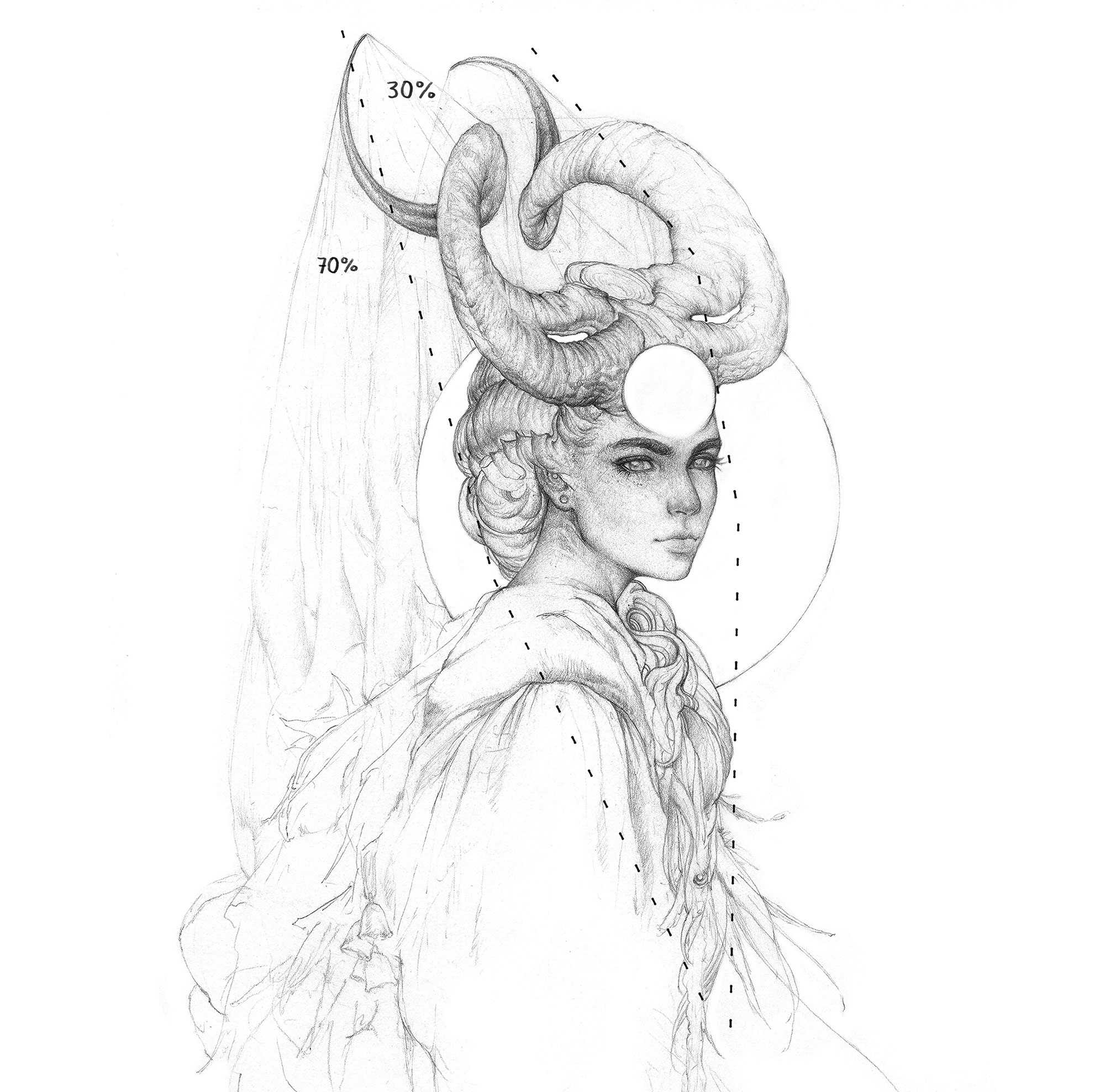
One of the most vital sketching tips is that less can be more! The 70/30 rule helps you create effective compositions. The thought is that 30 per cent of your sketch is filled with the main focus and detail, and the remaining 70 per cent is filler. This less interesting area helps direct attention towards the main subject of your artwork. You tin can see the rule in action in Von Rueden'south sketch to a higher place.
09. Make information technology (well-nigh) symmetrical
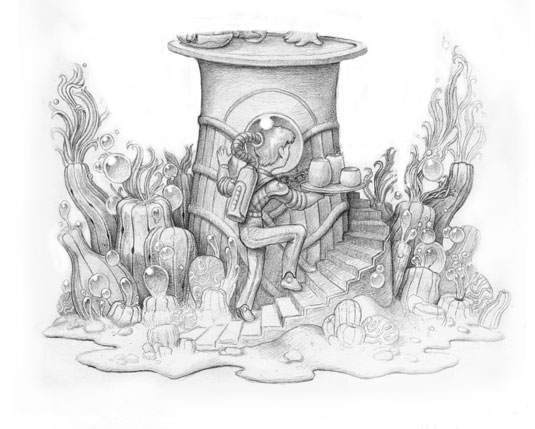
"I similar symmetrical drawings, simply they often expect irksome all also quickly," says Croes. "A expert mode to forbid this is to add some subtle changes and only keep the general lines symmetrical instead of mirroring every modest function. Keeping some elements asymmetrical helps to avert boring repetition."
10. Differentiate different textures
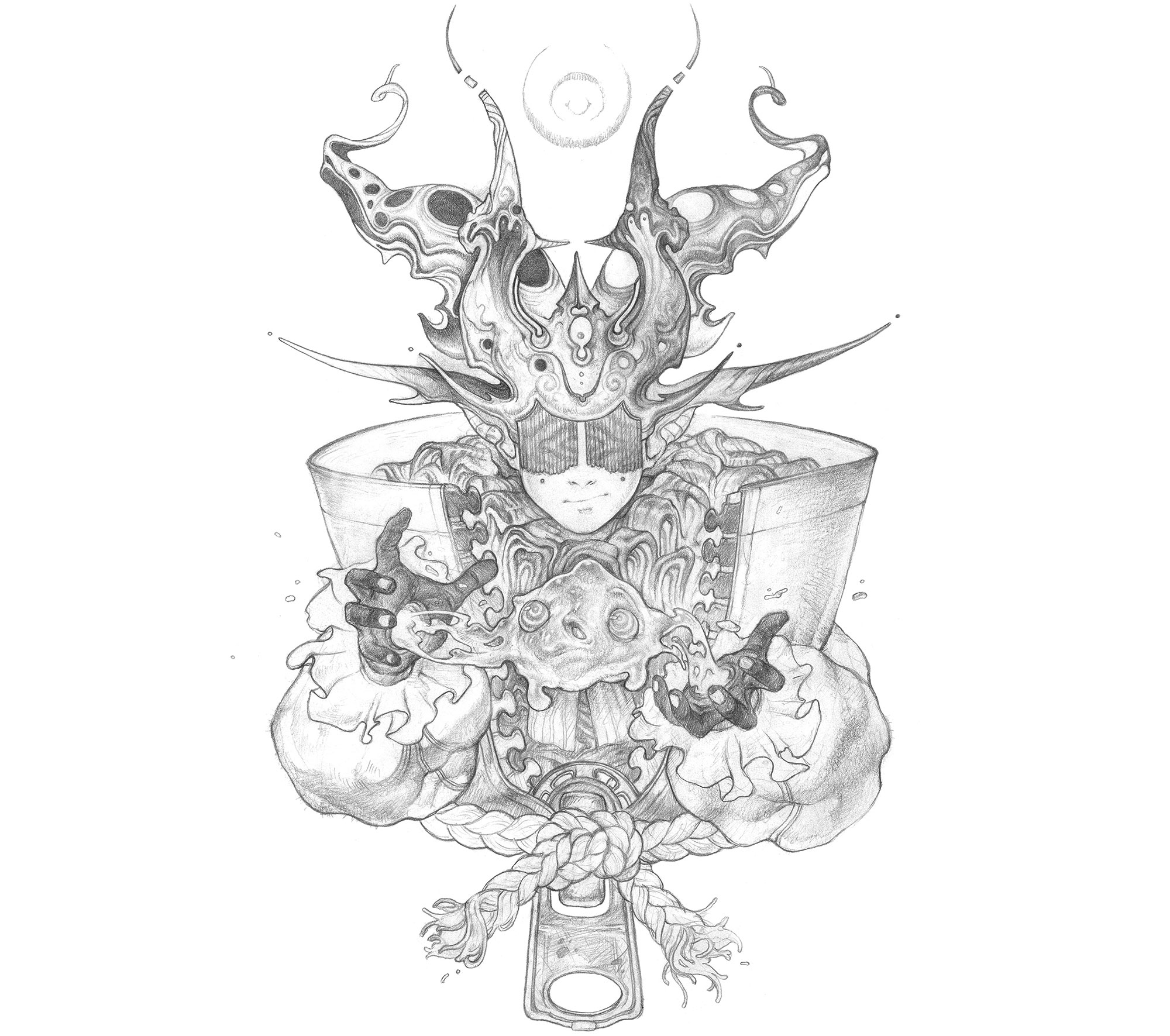
To show different textures within your sketch, you need to adjust your technique. "You wouldn't want to shade peel the same way you lot shade metallics or fur. They each have unique properties and capturing that will elevate your drawings because of the accurateness depicted," says Von Rueden.
A good starting signal is to consider if the texture is crude or smooth, and so if it blot or reflects lite. "A reflecting and smooth texture, such equally chrome, usually has higher contrasts and prominent highlights, while an arresting and rough texture like cotton has low contrasts and fiddling to no highlight present," he continues.
Next page: Avant-garde sketching tips to have your drawings to a new level
Related articles
Source: https://www.creativebloq.com/illustration/sketching-tips-beginners-81516497
0 Response to "drawings look too 3d from background domain_10"
Postar um comentário